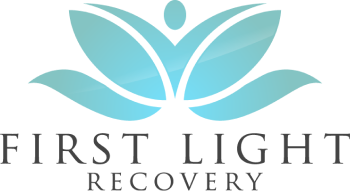Anxiety Attack vs Panic Attack
Individuals have commonly used both anxiety and panic attacks interchangeably, but there are different conditions that separate the two. Although similar in many symptoms that arise, specific aspects contribute towards an overall diagnosis. The DSM-5 does not list anxiety attacks specifically but does identify anxiety found in the criteria of many other mental health diagnoses. Panic attacks can start from the individual experiencing anxiety symptoms but can quickly escalate to severe fear and sheer panic.
Understanding Anxiety Attacks
Anxiety attacks, often less discussed than panic attacks, are characterized by a gradual build-up of worry, apprehension, and fear. Unlike panic attacks, they do not strike out of the blue but rather develop over time, often in response to stressors or perceived threats. Key symptoms include a persistent sense of worry or dread, restlessness, and physical symptoms like heart palpitations, sweating, trembling, and gastrointestinal discomfort. These symptoms can build up over minutes to hours, sometimes even days, and can vary in intensity and duration based on the individual and their specific circumstances.
The causes of anxiety attacks are multifaceted, often rooted in a combination of genetic predisposition, environmental factors, and personal history. Individuals with a history of trauma/ traumatic events, or chronic stress are particularly susceptible. The duration and frequency of these attacks can also vary greatly – some may experience them sporadically in response to specific triggers. In contrast, others might face them more regularly, impacting their daily lives and well-being.
Understanding Panic Attacks
Panic attacks, on the other hand, are marked by their sudden and intense nature. They often occur unexpectedly, without a clear trigger, and can be extremely alarming to the individual experiencing them. The symptoms of a panic attack are not only psychological but also intensely physical. Common symptoms include a racing heartbeat, shortness of breath, chest pain, dizziness, trembling, difficulty concentrating, and an overwhelming feeling of dread or fear of losing control. Some individuals describe it as feeling like they are having a heart attack or a total loss of control.
The exact cause of panic attacks is not fully understood, but they are thought to result from a combination of biological vulnerabilities, environmental stressors, and underlying psychological factors. Unlike anxiety attacks, which build gradually, panic attacks typically reach their peak intensity within minutes and can last anywhere from a few minutes to half an hour. The abrupt and intense nature of panic attacks can leave a lasting impression, often leading to persistent worry about future attacks or the avoidance of situations where attacks may occur.
How are anxiety attacks and panic attacks different
While both conditions share certain commonalities, such as the manifestation of fear, physical discomfort, and the impact on an individual’s quality of life, their nature, onset, and progression are markedly different, leading to the necessity of differentiated approaches in their management and treatment.
Nature and Onset
Anxiety attacks typically have a more gradual onset. They are characterized by a buildup of worry and tension, often in response to specific stressors or perceived threats. This can involve a persistent state of heightened worry, where the individual may be able to pinpoint what is causing their distress. In contrast, panic attacks are abrupt and intense. They often strike without warning, creating a sudden surge of overwhelming fear and physical symptoms that can be extremely alarming. The unpredictable nature of panic attacks can significantly contribute to the distress they cause, as individuals may feel apprehensive about when the next attack will occur.
Symptoms
Both conditions share certain symptoms such as increased heart rate, sweating, and a feeling of nervousness. However, panic attacks are usually more intense and physically overwhelming. They often include symptoms such as chest pain, a feeling of choking, dizziness, and a sense of impending doom. These intense physical symptoms can make panic attacks particularly frightening, as individuals often fear they are having a heart attack or other life-threatening medical emergency.
Duration and Frequency
The duration of these attacks also varies. Anxiety attacks, due to their gradual onset, can last for a prolonged period – sometimes hours or even days in a state of heightened worry and tension. Panic attacks, while extremely intense, are typically shorter in duration, usually peaking within 5 to 20 minutes before subsiding. However, the after-effects of a panic attack, such as exhaustion and lingering anxiety, can last for a longer period.
Prevalence and Statistics
Since the onset of the global pandemic in 2020, many individuals have experienced an increase in symptoms of anxiety that were not present before. According to the Centers for Disease Control and Prevention (CDC), a significant increase in anxiety was observed in adults, from 31.4% to 36.9% between August and December 2020. The numbers from 2019 have increased approximately three times in 2020 compared to symptoms reported before the pandemic.
Symptoms
Symptoms of Anxiety Attack
- Rapid heart rate
- Extreme worry and distress
- Fear
- Shaking
- Dizziness
- Fatigue
- Loss of concentration
- Numbness or tingling
- Chest pain
- Sleep disturbance
Symptoms of Panic Attack
- Hot flashes or chills
- Sweating
- Nausea
- Shortness of breath
- Pounding heartbeat
- Feeling of choking
- Fear of dying
- Detachment or feeling ungrounded
Causes
- Financial stress
- Employment/career stress
- Caffeine
- Withdrawal from alcohol or drugs
- Past or current trauma
- Medications
- Various phobias
- Social stress
- Driving
- Chronic pain
Risk Factors
- Ongoing stresses in personal/professional life
- Co-occurring diagnosis or other mental health issues
- Chronic medical conditions
- Problems with alcohol or drug use
- Experienced or witnessed trauma
- Family history of anxiety symptoms
- Anxious personality
Start Your Journey Toward Healing Today
If you’re struggling with your mental health, you don’t have to face it alone. First Light Recovery offers compassionate care, expert treatment, and a real-world approach to empower you.
